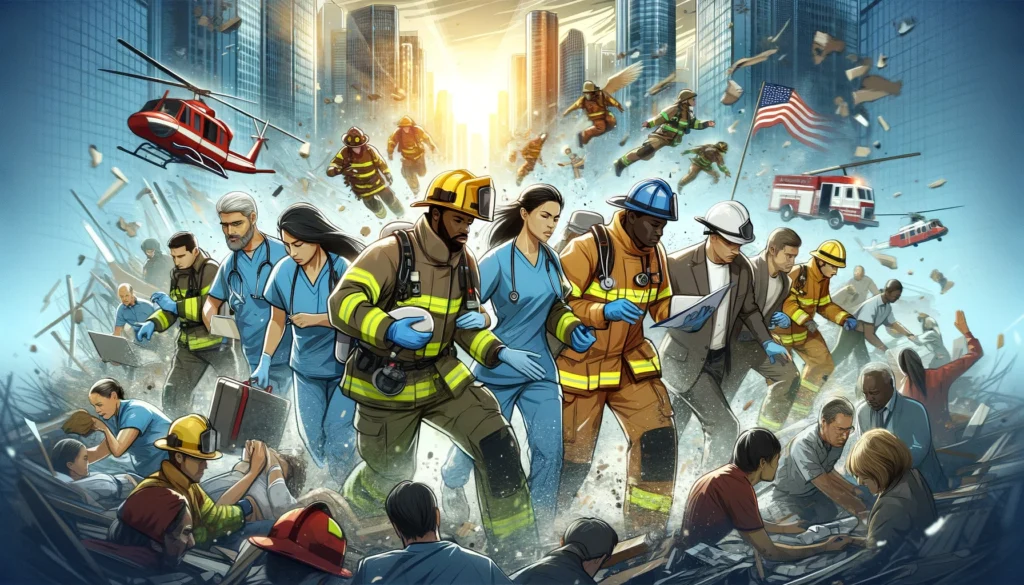In the tapestry of global crises, from natural disasters to humanitarian emergencies, there exists a formidable thread woven by heroes who are often unseen yet profoundly impactful. These heroes are the men and women of various world rescue organizations, groups committed to providing aid, restoring peace, and saving lives across the globe. Today, let’s take a closer look at these organizations, their operations, and the vital roles they play in our world’s most precarious situations.
Who Are These Global Heroes?
World rescue organizations encompass a wide range of entities, including non-profits, government agencies, and international coalitions. They operate in environments that are often volatile and unpredictable, requiring not just courage but also precision and expertise. The most recognized among these include the International Red Cross and Red Crescent Movement, the United Nations’ various relief wings like UNICEF and the World Food Programme, as well as specialized agencies such as the International Rescue Committee and Doctors Without Borders (Médecins Sans Frontières).
These organizations share a common goal: to provide relief in emergencies and help rebuild communities in the aftermath. Their efforts are not limited to disaster response; they also engage in long-term development programs, education on health and safety, and advocacy for vulnerable populations.
How Do They Operate?
The operational strategies of world rescue organizations are as diverse as the crises they address. However, a typical response framework includes assessment, mobilization, implementation, and evaluation.
- Assessment: When a crisis occurs, rapid assessment teams are deployed to evaluate the needs of the affected area. This involves identifying the immediate needs of the population, the extent of the damage, and the resources required.
- Mobilization: Resources such as rescue units, medical teams, and aid supplies are mobilized. This phase often requires intricate logistics, especially when dealing with hard-to-reach areas or conflict zones.
- Implementation: The on-ground implementation of rescue and relief operations is the most visible phase. It includes providing medical care, distributing food and water, setting up shelters, and ensuring security and order.
- Evaluation: After the initial emergency response, organizations assess the impact of their intervention and plan for long-term recovery and support. This could involve rebuilding infrastructure, offering psychological support, and improving local capacities to handle future crises.
Impact and Challenges
The impact of these organizations is profound. They not only save lives but also help communities regain their autonomy and dignity. However, their work is fraught with challenges. Political conflicts, security risks, and logistical nightmares can hinder access to affected areas. Furthermore, funding is a perennial issue, as many organizations rely on donations and grants, which can be unpredictable and insufficient.

Bridging the Gap with Technology and Innovation
In recent years, technology has begun playing a pivotal role in enhancing the efficiency and reach of rescue operations. Drones, for instance, are used for mapping disaster areas and delivering supplies. Advanced telecommunications technologies enable better coordination among teams, even in remote locations. Moreover, data analytics and machine learning are being employed to predict crisis patterns and optimize resource allocation.
The Path Forward
As global challenges evolve, so must the strategies of world rescue organizations. The future will likely see an even greater integration of technology in rescue operations, more robust global partnerships, and an increased focus on sustainable practices that not only address immediate needs but also prevent future crises.
For those looking to support these heroic efforts, engagement doesn’t have to mean heading into the field. Contributions can be as simple as donations, volunteering in community preparedness programs, or even spreading awareness. Every action counts towards building a resilient global community.
Conclusion
The heroes of World Rescue Organizations are as diverse as the challenges they face. They come from different backgrounds but share a commitment to humanitarian service. Their work reminds us of our interconnectedness and the collective responsibility we hold toward each other in times of need. Understanding and supporting these organizations not only helps those in immediate danger but fortifies the foundations of global peace and cooperation.
By shedding light on the critical work of these unsung heroes, we gain not just an appreciation for their sacrifices and achievements but also an understanding of how, in times of disaster, humanity comes together to heal, rebuild, and hope.

